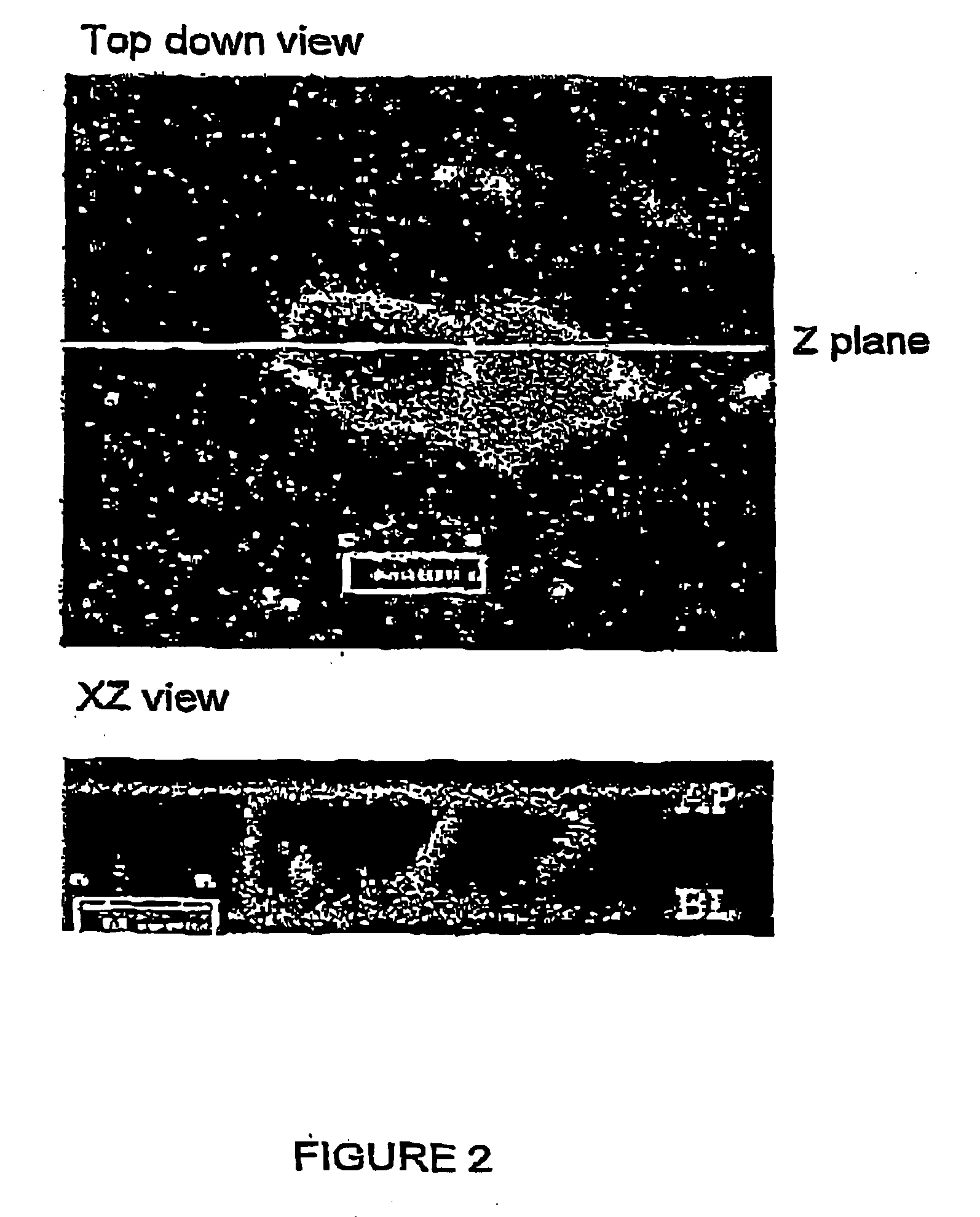Modified proteins, isolated novel peptides,and uses thereof
a technology of modified proteins and novel peptides, applied in the field of bacterial infection treatment and fungal infection, can solve the problems of drug resistance, cell resistance to the administered drug, and drug resistance to occur
- Summary
- Abstract
- Description
- Claims
- Application Information
AI Technical Summary
Benefits of technology
Problems solved by technology
Method used
Image
Examples
example 2
TKF Motifs in Other ABC Transporter Polypeptides Derived from Sequence Alignments and Molecular Modeling
[0275] Experimental Procedure
[0276] The protein sequence of the C-terminal cytoplasmic domains of 37 ABC transporters from the P-glycoprotein and MRP subfamilies were aligned with the histidine permease (HisP) sequence using the ClustalW alignment program. The multiple sequence alignment was used with the coordinates of the HisP crystal structure (Hung et al., (1998) Nature 396, 703-707) to generate a homology model of the C-terminal cytoplasmic domain from MRP1 and cMOAT using BioNavigator at the ANGIS Internet site (BioNavigator by eBioinformatics Pty. Ltd.). The models were generated using the Rigorous Models software (Abagyan et al., (1994) J. Comp. Chem. 15,488-506) and presented using Swiss Pdb Viewer (v3.6b3) (Guex et al., (1997) Electrophoresis 18, 2714-2723).
[0277] Results
[0278] The alignment represented in FIG. 7 shows that those MRP proteins that localize to the apical ...
example 3
[0285] Modified cMOAT Polypeptides Confer Resistance to Busulfan on L1210 Cells
[0286] Busulfan is normally conjugated to glutathione in the cytoplasm of cells by glutathione-S-transferase (Czerwinski et al. (1996) Drug Met. Dispos. 24, 1015-1019), indicating that the conjugated product is possibly a substrate for cMOAT. Accordingly, the ability of modified cMOAT polypeptides to confer resistance to Busulfan was determined in L1210 cells. In particular, the .DELTA.cMOAT polypeptide having the amino acid sequence set forth in SEQ ID NO: 4, was expressed in L1210 cells as described in Example 1. The transfected cells were exposed to a range of concentrations of Busulfan. The survival of wild type L1210 cells, and transfected L1210 cells expressing either native cMOAT or .DELTA.cMOAT, was determined in the presence of Busulfan. Survival was also assessed relative to the growth of cells that had not been exposed to Busulfan. Cell growth and survival were assayed using standard procedures...
example 4
Use of modified ABC Transporter Polypeptides to Screen for Modulators of ABC Transporters
[0288] By targeting a modified cMOAT polypeptide to the cell membrane of a suspension cell of the haematopoietic lineage, such as, for example, L1210 cells or Jurkat cells, therapeutic agents that are transported by cMOAT, or novel therapeutic agents that modulate cMOAT, are detected by virtue of their ability to be transported from the cell. Cells that are stably transfected with a mutated cMOAT cDNA sequence encoding a modified cMOAT polypeptide are incubated with such novel therapeutic agents at levels that are not cytotoxic. Following incubation, the supernatants of cells are analyzed by HPLC to determine whether or not the agents are metabolized. Alternatively in the case of fluorescent chemical agents, the cells are examined by flow cytometry, for a decrease in fluorescence due to cMOAT export function. Using a known fluorescent substrate for cMOAT, such as Fluo-3, potential modulators of ...
PUM
| Property | Measurement | Unit |
|---|---|---|
| green fluorescent protein | aaaaa | aaaaa |
| fluorescent | aaaaa | aaaaa |
| fluorescent protein | aaaaa | aaaaa |
Abstract
Description
Claims
Application Information
 Login to View More
Login to View More - R&D
- Intellectual Property
- Life Sciences
- Materials
- Tech Scout
- Unparalleled Data Quality
- Higher Quality Content
- 60% Fewer Hallucinations
Browse by: Latest US Patents, China's latest patents, Technical Efficacy Thesaurus, Application Domain, Technology Topic, Popular Technical Reports.
© 2025 PatSnap. All rights reserved.Legal|Privacy policy|Modern Slavery Act Transparency Statement|Sitemap|About US| Contact US: help@patsnap.com



